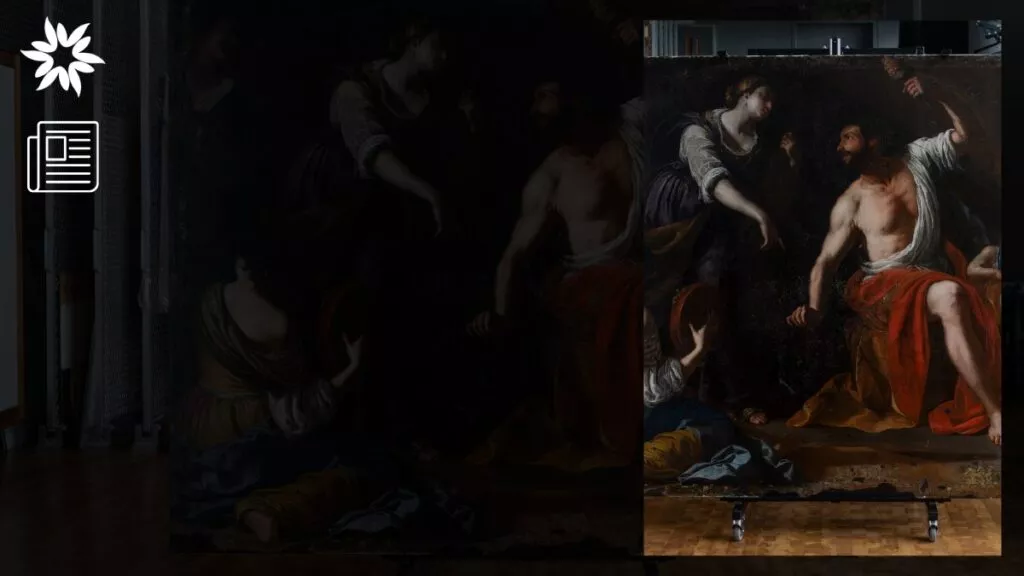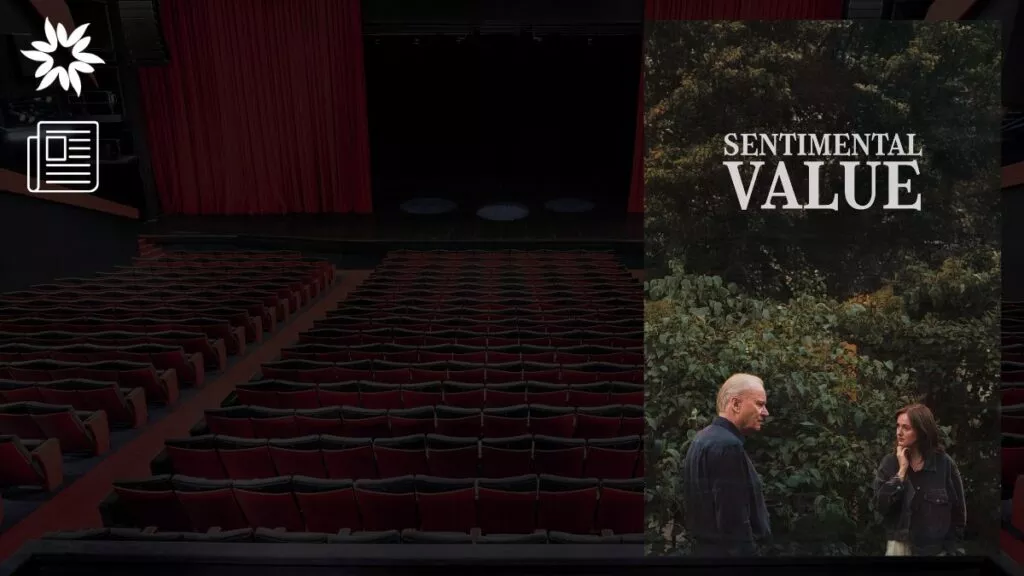Conceptual art might not be the kind of art you immediately fall in love with—it’s not about beautiful paintings or sculptures.
Instead, it’s the kind of art that makes you think, ask questions, and sometimes even scratch your head in confusion.
Conceptual art prioritizes ideas over physical objects, and that shift has shaken up the art world since it first emerged in the 1960s.
It has grown into a major art movement that has influenced how we think about art, creativity, and even reality itself.
In this blog, we’ll examine conceptual art in detail, including its origins, some famous artists, its spread across the world, and why it still matters today.
Key Takeaways
- Conceptual art is all about ideas – the process and meaning behind a piece are often more important than the physical artwork itself.
- The movement broke away from traditional art, beginning in the 1960s, as artists started questioning the role and limits of art.
- Conceptualism is a global movement, with unique political and cultural influences shaping it differently across the world.
What is Conceptual Art?
Conceptual art refers to an art movement where the concept or idea behind the artwork is more important than its aesthetic, form, or material.
The actual object or artwork (if there is one) comes second. Sometimes, the artist might not even create a finished piece.
The point is the thought process behind it rather than the physical result.
This is very different from traditional art styles, which focus on the craftsmanship of painting, sculpture, or other forms.
Conceptual artists turned this idea on its head by saying, “Hey, it’s not about how the art looks, it’s about what it makes you think or feel.”
In fact, sometimes the art might not even look like art at all.
It could be a collection of random objects, a performance, a written instruction, or even an empty space.
Sol LeWitt, one of the pioneers of conceptual art, famously said, “In conceptual art, the idea or concept is the most important aspect of the work.”
His quote perfectly sums up what conceptual art is all about.
It’s art that makes your brain work harder than your eyes.
The Origins of Conceptual Art
While conceptual art is often associated with the 1960s and 70s, its roots go much further back.
To understand where it all began, we need to look at the early 20th century, particularly at one man who shook up the art world long before conceptual art had a name: Marcel Duchamp.
Marcel Duchamp and the “Readymades”
Duchamp is often considered the father of conceptual art.
In 1917, he created one of the most famous and controversial pieces of art history: the Fountain.
But this wasn’t a sculpture he crafted from marble or bronze; it was a urinal he picked up from a plumbing supply shop, signed “R. Mutt,” and submitted as art to an exhibition.
The art establishment was outraged.
How could a urinal be art?
Duchamp’s work was an act of rebellion, a way to question the boundaries of art.
Was art just about craft, or could it be about ideas and the artist’s intention?
Duchamp’s “readymades”—ordinary, everyday objects presented as art—paved the way for conceptual art by proposing that anything could be art if it was chosen by the artist and if it provoked thought.
Fluxus Movement and the Early Days
Fast forward to the 1960s, and a movement called Fluxus was brewing.
Artists like Yoko Ono and Joseph Beuys were part of this international group that believed art shouldn’t just be something you hang on a wall—it should be integrated into everyday life.
Fluxus embraced the idea that art could be an action, a performance, or even a fleeting moment.
Fluxus artists were keen on breaking down the barriers between art and life, using anything from a piano key to a conversation as art.
They often leaned toward humor and anti-commercialism, deliberately creating art that couldn’t be bought or sold in the traditional way.
This open-minded, boundary-pushing approach laid the groundwork for conceptual art, especially as artists became more interested in ideas rather than objects.
The Rise of Conceptual Art in the 1960s and 70s
By the mid-1960s, conceptual art was coming into its own.
Artists were fed up with the art world’s obsession with beauty, skill, and craftsmanship.
Instead, they turned their attention to ideas, language, and critique.
The result?
Art that was often minimal, text-based, or entirely abstract, leaving the viewer to connect the dots.
Key Concepts in Conceptual Art
There are a few key concepts that help explain what makes conceptual art tick:
- Dematerialization of Art: Conceptual artists actively moved away from traditional materials like paint and stone. They focused instead on ideas, words, and actions, dematerializing the art object.
- Art as Idea: The idea or concept behind a piece becomes the work of art itself. The physical manifestation of the artwork—if it existed at all—was secondary.
- Language and Text: Language became a central tool in conceptual art. Rather than paint a picture, many conceptual artists simply wrote down the idea.
- Art as Critique: Conceptual art often questions the very nature of art and institutions. Artists critiqued everything from the art market to societal systems, using their works as forms of resistance and intellectual rebellion.
Influential Conceptual Artists and Their Works
Let’s take a look at some of the artists and works that defined this revolutionary period.
Joseph Kosuth: The Art of Ideas
Joseph Kosuth is one of the most well-known names in conceptual art, and for good reason.
His 1965 work “One and Three Chairs” is a perfect example of how conceptual art challenges the viewer to think about art in new ways.
In this piece, Kosuth placed a physical chair, a photograph of the chair, and a dictionary definition of a chair side by side.
The viewer is left to consider: which of these is the “real” chair?
Is it the object itself, the idea of a chair, or the representation of it?
Kosuth’s work pushes us to question the nature of objects, language, and reality.
Sol LeWitt: The Man Behind the Manifesto
Sol LeWitt’s 1967 essay, “Paragraphs on Conceptual Art,” was a defining moment for the movement.
In this manifesto, LeWitt argued that once an artist has conceived of an idea, the actual execution of the artwork is almost irrelevant.
His wall drawings—where he often provided instructions for others to carry out—demonstrate this philosophy.
The artist could devise the plan, and the artwork would be created based on those instructions, with the final result varying depending on who executed it.
Yoko Ono: Art Beyond Objects
Yoko Ono’s contribution to conceptual art is undeniable.
Her 1964 book, “Grapefruit,” is filled with instructional pieces, where the art is the idea itself.
The instructions, like “draw an imaginary map of the wind,” invite the audience to engage with the concept of art in their own minds, turning the experience into something participatory.
Ono’s work blurred the line between artist and audience, a hallmark of conceptualism.
Conceptual Art Goes Global
While the U.S. and England are often considered the birthplaces of conceptual art, the movement quickly spread across the globe, with each region adding its own unique twist.
Latin America: Conceptualism as Political Resistance
In Latin America, conceptual artists worked under the weight of political oppression and military regimes.
Art became a tool for resistance.
Brazilian artist Cildo Meireles, for example, used Coca-Cola bottles and banknotes in his “Insertions into Ideological Circuits” series (1969).
Meireles would stamp political messages onto these objects and return them into circulation, allowing the art to infiltrate daily life and subtly challenge the ruling system.
For these artists, conceptual art was a weapon, a way to speak out against corrupt regimes without being silenced.
Soviet Union: Moscow Conceptualism
In the Soviet Union, conceptual art took on a different flavor.
It was an underground movement, mixing Western ideas of conceptualism with Soviet Socialist Realism.
Artists like Ilya Kabakov and others in the Moscow Conceptualists group used their art to critique the absurdity of Soviet life, often layering their work with irony and satire.
Japan: Mono-ha and Beyond
In Japan, the Mono-ha movement of the late 1960s shared a lot with conceptual art in the West.
Artists like Nobuo Sekine and Lee Ufan explored the relationships between materials, objects, and space.
Mono-ha wasn’t strictly conceptual, but it emphasized the idea over form, echoing many of the same themes as conceptualism.
These artists used minimal interventions—like arranging rocks or glass in natural environments—to prompt viewers to reconsider the essence of materials and the way we perceive reality.
Conceptual Art Takes on the Art World: Institutional Critique
By the late 1960s, conceptual art had set its sights on one of its biggest targets: the museum system.
Artists began to critique the very institutions that housed their work, asking tough questions about the role of museums, galleries, and the art market.
Hans Haacke: Art That Polls the Public
One of the leading figures in institutional critique was Hans Haacke.
His work “MoMA Poll” (1970) was part of an exhibition at the Museum of Modern Art in New York.
Haacke asked visitors to vote on a political question: whether they would still support Governor Rockefeller, a MoMA trustee, even though he hadn’t denounced President Nixon’s policies in Indochina.
The results—clearly visible in transparent ballot boxes—created a public statement that challenged both Rockefeller and the museum’s role in politics.
Haacke’s work wasn’t just art—it was a social intervention, forcing museums to reckon with their complicity in political systems.
Michael Asher and Daniel Buren: Exposing the System
Artists like Michael Asher and Daniel Buren followed suit, using their work to expose the inner workings of the museum.
Buren, for example, was famous for creating pieces that were more about the space where the art was displayed than the art itself.
His striped banners often covered gallery walls, drawing attention away from the artwork and onto the institutional context.
Conceptual Art and the Philosophical Debate
Beyond its critique of the art world, conceptual art also sparked philosophical discussions about the nature of art itself.
If art is just an idea, where does that leave us?
Can anything be art if an artist says so?
Conceptual art raises questions about truth, meaning, and interpretation, which have kept philosophers busy for decades.
Art as Idea vs. Art as Object
One of the core debates revolves around the idea that art should be experienced rather than just viewed.
If conceptual art is an idea, then does the object matter at all?
Some argue that art exists in the concept and doesn’t need a physical form.
Others, like David Davies, argue that art is a process and the object—no matter how minimal—still plays a crucial role in how we experience and interpret the idea.
Aesthetic Value vs. Cognitive Value
Conceptual art challenges the traditional belief that art’s main purpose is to be aesthetically pleasing.
Instead, many conceptual artists focus on cognitive value—the ability of art to make us think and question our assumptions.
Philosopher Timothy Binkley took this further, arguing that conceptual art de-emphasizes the visual in favor of intellectual engagement.
If art is about understanding ideas, then maybe it doesn’t need to be beautiful at all.
Conceptual Art Today: Contemporary and Post-Conceptual Art
Conceptual art may have had its heyday in the 1960s and 70s, but its impact is still felt today.
Many of the techniques, ideas, and approaches developed by conceptual artists have been absorbed into contemporary art practices, creating a movement sometimes called post-conceptual art.
Jenny Holzer: Words as Art
Contemporary artists like Jenny Holzer have taken the conceptual approach and run with it.
Holzer is best known for her text-based works, which often appear on billboards, public spaces, or even as projections on buildings.
Her messages, like “Abuse of Power Comes As No Surprise,” challenge viewers to think critically about politics, gender, and society.
Cindy Sherman: Identity and Representation
Cindy Sherman uses photography to explore themes of identity, representation, and the role of women in society.
Her famous series of self-portraits often depict her in various costumes and roles, questioning the nature of selfhood and how we construct identities.
While her work is highly visual, the concept behind the image—Sherman as both creator and subject—is deeply rooted in conceptual art’s legacy.
Anish Kapoor: Sculpture That Plays With Reality
Anish Kapoor, a British-Indian sculptor, works with large-scale installations and reflective surfaces that challenge the viewer’s perception of reality.
His work blurs the lines between what is present and what is absent, echoing the conceptualists’ focus on ideas over objects.
Conceptual Art’s Lasting Legacy
Conceptual art may not be everyone’s cup of tea—it’s not meant to be easily digestible or immediately visually appealing.
Instead, it challenges us to think more deeply about what art can and can do.
From its roots in Duchamp’s readymade to the global movements that embraced it, conceptual art has reshaped the boundaries of creativity and expression.
It has shown that art is as much about thought, philosophy, and resistance as it is about form, color, and beauty.
In today’s art world, conceptualism lives on in new forms, from public interventions to text-based installations.
Whether you love it or hate it, conceptual art has opened up the possibilities of what art can be—transforming the conversation from “what is beautiful?” to “what is meaningful?”
And isn’t that, in the end, what art is supposed to do?








